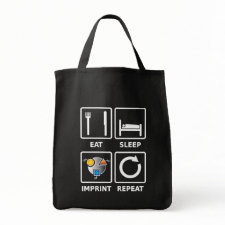
Authors: Shi N, Gao BJ, Chen T
Article Title: Preparation of BSA Molecule Surface-imprinted Material and Study on its Macromolecule Recognition Character.
Publication date: 2014
Journal: Acta Polymerica Sinica
Issue: (12)
Page numbers: 1678-1686.
DOI: 10.11777/j.issn1000-3304.2014.14139
Alternative URL: http://www.gfzxb.org/EN/abstract/abstract14201.shtml
Abstract: A bovine serum albumin (BAS) molecule surface-imprinted material with high performance was prepared through molecular design and process planning. The hydroxyl groups on crosslinked polyvinyl alcohol (CPVA) microspheres were firstly made to be esterified with methyl acryloyl chloride (MAC) as reagent, and a great deal of polymerizable double bonds were introduced onto the surfaces of the microspheres, forming modified microspheres MA-CPVA. Subsequently, with MA-CPVA as matrix and with cationic monomer acryloxyethyltrimethyl ammonium chloride (DAC) as functional monomer as well as with crosslinker N,N'-methylene bisacrylamide (MBA) as crosslinker, in a aqueous solution, BAS surface-imprinted material MIP-PDAC/CPVA was smoothly prepared. In this imprinting process, the strong electrostatic interaction between the host-guest molecules was the foundation, and the graft-polymerization of DAC and the imprinting of BAS were carried out synchronously. The product microspheres MIP-PDAC/CPVA were characterized by FTIR and SEM. On this basis, the macromolecule recognition character of MIP-PDAC/CPVA microspheres for BAS was examined in depth. The experimental results show that MIP-PDAC/CPVA microspheres possess excellent binding affinity and very high recognition selectivity. The binding capacity of BAS on MIP-PDAC/CPVA microspheres reaches up to 108mg/g, and the coefficient of selectivity of MIP-PDAC/CPVA towards BAS relative to the constrast protein bovine hemoglobin (BHb) actually gets up to 60.2.
Template and target information: protein, bovine serum albumin, BSA
Author keywords: Bovine serum albumin, Acryloxyethyltrimethyl ammonium chloride, Surface-imprinting, Graft-polymerization, Macromolecular recognition



Join the Society for Molecular Imprinting

New items RSS feed
Sign-up for e-mail updates:
Choose between receiving an occasional newsletter or more frequent e-mail alerts.
Click here to go to the sign-up page.
Is your name elemental or peptidic? Enter your name and find out by clicking either of the buttons below!
Other products you may like:
 MIPdatabase
MIPdatabase









